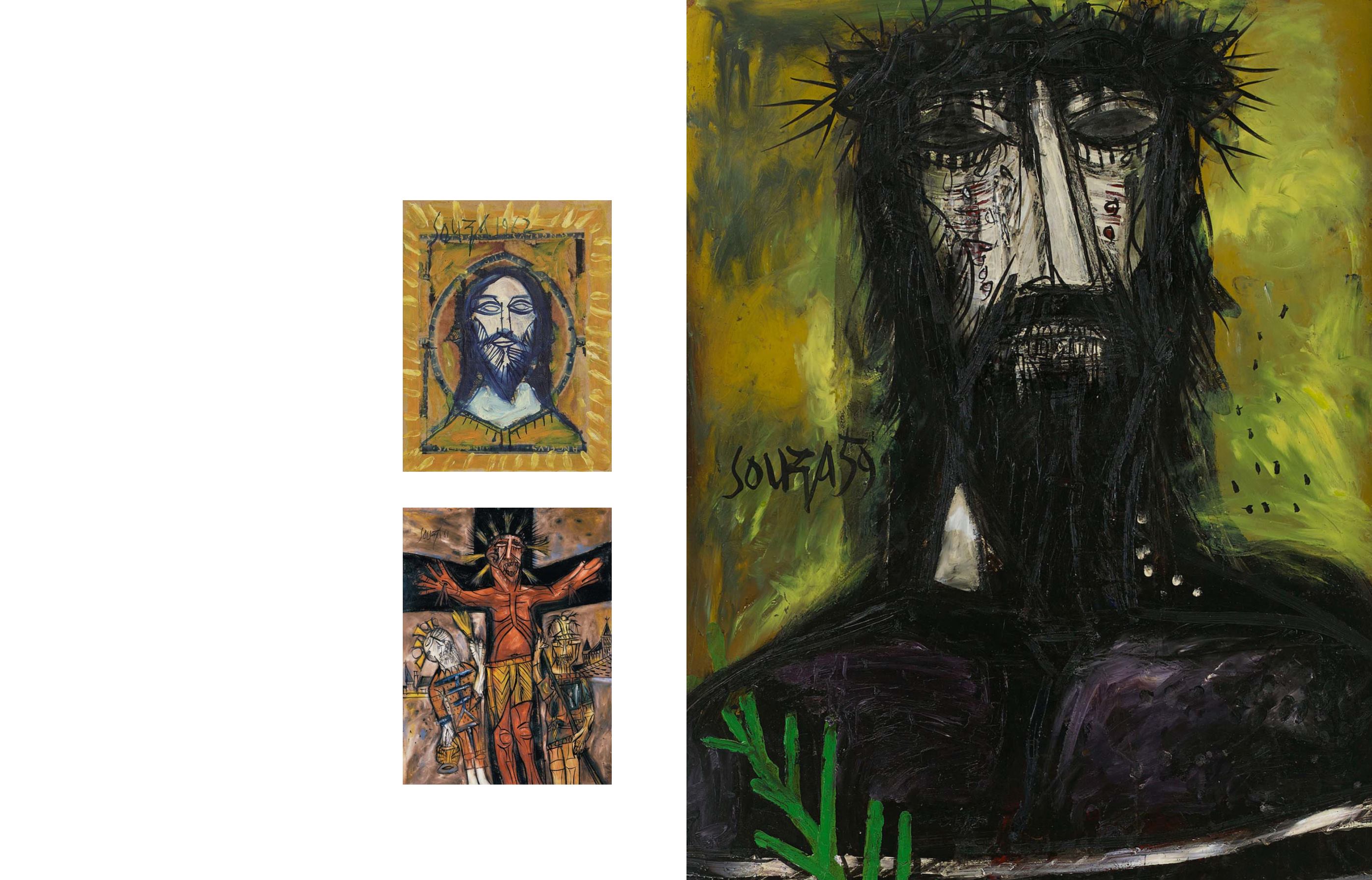

64
Saffronart | Evening Sale
Christ on Palm Sunday
is Souza’s interpretation of Christ’s
triumphant entry into Jerusalem on the Sunday preceding
his Crucifixion. When Jesus rode into Jerusalem on a donkey,
he was received as the spiritual King of Israel and honoured
with palm leaves. Artists through the ages have depicted
variations on this particular scene in Christ’s life, before
his death and resurrection leading up to Easter. In Souza’s
painting, Christ holds a palm leaf, a symbol of honour
reserved for the most venerable, and seen as an ancient
Roman symbol of victory. Yet the tone of the painting is
far from jubilatory, as depicted by other European artists.
Souza’s narrow canvas is filled by a portrait of Christ, whose
arms appear rigidly crossed over one another. Christ’s face
bears the marks characteristic of Souza’s many portrait
paintings: pock‒marks, eyes placed high in the forehead,
and sharp, angular lines like creases on his face. The black
eyes, dishevelled hair and crown of thorns portend the
events that will lead to his Crucifixion.
Souza visited the theme of Palm Sunday several times in his
oeuvre. The influence of the Roman Catholic Church on his
artistic output is ever‒present. He frequently painted Jesus
and his disciples, towering priests in birettas and chasubles,
saints and prophets, and religious objects through a lens
that juxtaposed satire and awe. “There is a religious quality
about his work which is medieval in its simplicity and in its
unsophisticated sense of wonder. Some of the most moving
of Souza’s paintings are those which convey a spirit of awe
in the presence of a divine power—a God, who is not a God
of gentleness and love, but rather of suffering, vengeance
and of terrible anger. In his religious work there is a quality
of fearfulness and terrible grandeur which even Rouault
and Sutherland have not equalled in this century.” (Edwin
Mullins,
Souza
,
London: Anthony Blond Ltd., 1962, p. 40)
The fearfulness, though understated in the present lot, is
palpable in his treatment of Christ.
In Souza’s own words, “The Roman Catholic church had
a tremendous influence over me, not its dogmas but its
grand architecture and the splendour of its services. The
priest dressed in richly embroidered vestments, each of
his garments from the biretta to the chasuble symbolising
the accoutrement of Christ’s passion. The wooden saints
painted with gold and bright colours staring vacantly out of
their niches. The smell of incense. And the enormous crucifix
with the impaled image of Man supposed to be the Son
of God, scourged and dripping, with matted hair tangled
F N Souza, Untitled , 1962 Saffronart, 15-17 June 2011, lot 22 F N Souza, Crucifixion , 1961 Saffronart, 6-8 December 2005, lot 5065


















